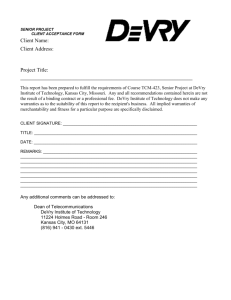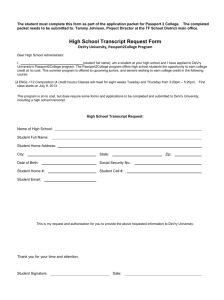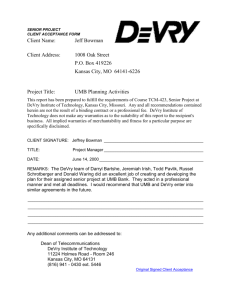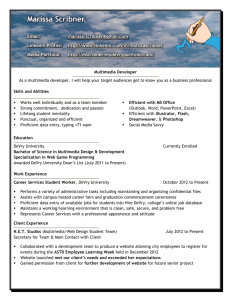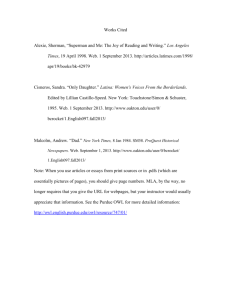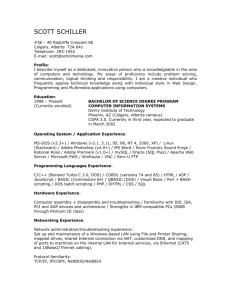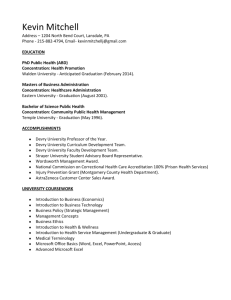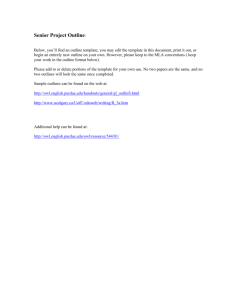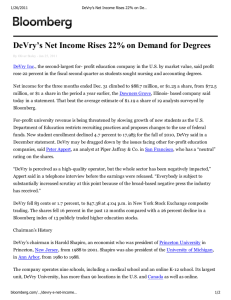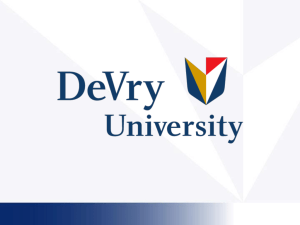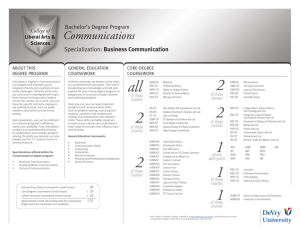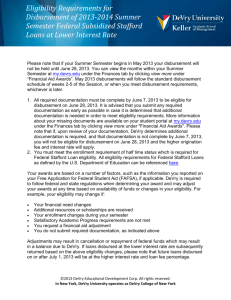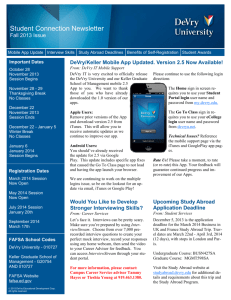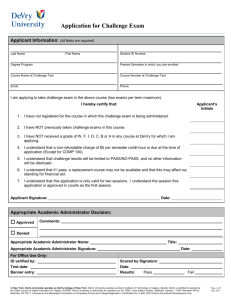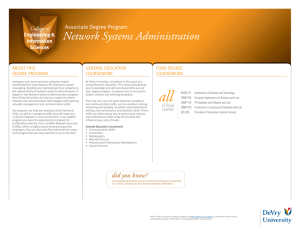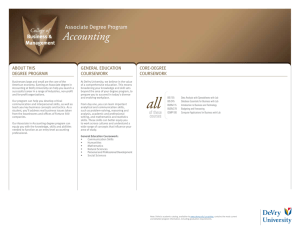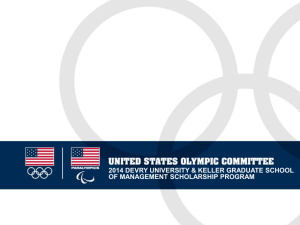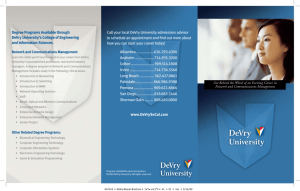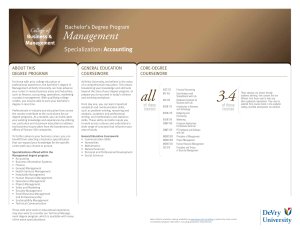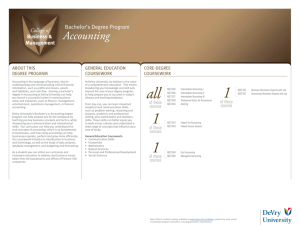A Brief Guide to Proposal Writing
advertisement
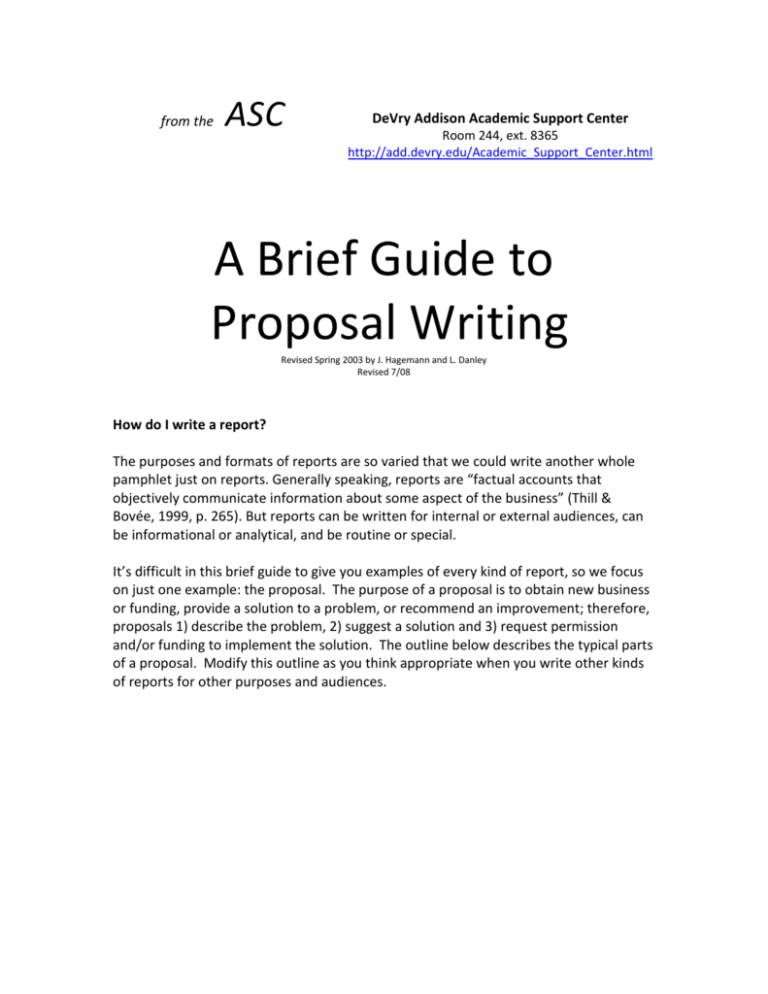
from the ASC DeVry Addison Academic Support Center Room 244, ext. 8365 http://add.devry.edu/Academic_Support_Center.html A Brief Guide to Proposal Writing Revised Spring 2003 by J. Hagemann and L. Danley Revised 7/08 How do I write a report? The purposes and formats of reports are so varied that we could write another whole pamphlet just on reports. Generally speaking, reports are “factual accounts that objectively communicate information about some aspect of the business” (Thill & Bovée, 1999, p. 265). But reports can be written for internal or external audiences, can be informational or analytical, and be routine or special. It’s difficult in this brief guide to give you examples of every kind of report, so we focus on just one example: the proposal. The purpose of a proposal is to obtain new business or funding, provide a solution to a problem, or recommend an improvement; therefore, proposals 1) describe the problem, 2) suggest a solution and 3) request permission and/or funding to implement the solution. The outline below describes the typical parts of a proposal. Modify this outline as you think appropriate when you write other kinds of reports for other purposes and audiences. 2 SAMPLE PROPOSAL REPORT Title Page PROPOSAL FOR ______________________ Prepared for Name Title By Name Title Date TABLE OF CONTENTS ABSTRACT ...................................................................................... 2 INTRODUCTION ............................................................................ 3 Purpose............................................................................. 3 Problem ............................................................................ 3 Scope ................................................................................ 3 TECHNICAL SECTION ...................................................................... 4 MANAGEMENT REQUIREMENTS ................................................... 5 COST SECTION ............................................................................... 6 CONCLUSION ................................................................................. 7 RECOMMENDATIONS .................................................................... 7 LIST OF ILLUSTRATIONS Table 1. Cost Estimates................................................................. 6 Another acceptable variation of the Introduction section is Purpose, Scope, Procedure. 3 ABSTRACT/EXECUTIVE SUMMARY The abstract is the entire report in capsule form. It serves as a miniature report. Since it is intended for the busy executive, it may receive the most attention. It may be one or two paragraphs in length, or it may be several sentences in length. INTRODUCTION Purpose The purpose of this report is to propose . . . (one sentence will suffice.) Problem There is a problem associated with . . . (Length will vary from several sentences to one or two paragraphs). Scope This paper will cover the areas of the proposed system followed by sections on management requirements and costs involved. (This is one sentence to reveal the parts, emphasis, or boundaries of the report.) TECHNICAL SECTION This part of the paper should describe the existing problem, how it affects productivity, efficiency, and company profits. It should present the writer’s proposal for change. The proposed change should be a solution to the described problem. This section should be divided into two sections-–one for the problem background and one for the new proposed system/solution. Use explanation, demonstration, or statistical data to support the proposed system. MANAGEMENT REQUIREMENTS This part of the report should consist of two well-developed paragraphs-– one to address any changes in personnel and one to discuss any changes in physical facilities. Even if the report does not require any changes in these areas, specifically indicate this and explain why. With regard to personnel, specifically discuss some of the following ideas: new personnel? Eliminations of personnel? Consultants? Training of personnel? Safety? Experience required of personnel? Installation by inside/outside agencies? Need for repair and maintenance persons? With regard to the physical facilities of the business, discuss some of the following concepts: changes in the size of rooms, offices, working areas? Expansion required? New buildings required? Furniture requirements? Electrical lighting changes? Temperature changes? 4 COST SECTION This part of the report should verbally analyze and discuss cost requirements to implement the proposed system. At this point, it is also significant to explain how the proposed change will reduce waste or increase company profits. After the costs have been verbally analyzed, the writer should present a table to visually present the cost data. In a brief introductory paragraph, direct the reader to the table and interpret the estimated costs. Table 1 Cost Estimates Item XXXXXXX YYYYYYY ZZZZZZZZ Cost $100.00 $200.00 $300.00 Total $600.00 CONCLUSIONS 1. 2. 3. Provide 3 or 4 concise conclusions to summarize the main parts of the proposal body. At this point, re-emphasize the profits of advantages resulting from the proposal’s implementation. Number the conclusions for greater impact and emphasis. RECOMMENDATIONS Make a statement encouraging management to implement the proposed change based on evidence presented in the report. 5 ADDITIONAL RESOURCES If you need more help, here are two resources to consult: • the Writing tutors at the Academic Support Center. Find out their current schedule by calling ext. 8365, stopping by Room 244, or checking the Web at http://add.devry.edu/Academic_Support_Center.html • the online advice from the OnLine Writing Lab (OWL) at Purdue University. OWL is probably the best writing center in the nation and is a useful resource for many writing topics. For an index of topics on business writing, check the Web at http://owl.english.purdue.edu/handouts/pw/index.html#sub6 and http://owl.english.purdue.edu/workshops/pp/index.html#business Adapted from Beason, L. (2001). Ethos and error: How business people react to errors. College Composition and Communication, 53, 33-64. / Lamarre, Helene. (2001). Student Writing Guide: DeVry Institute of Technology DuPage Campus. Unpublished manuscript. / Madraso, J. (1993). Proofreading: The skill we’ve neglected to teach. English Journal, 82(2), 32-41. / Rosen, L. M. (1998). Developing correctness in student writing. In C. Weaver (Ed.), Lessons to share on Teaching Grammar in Context (pp. 137-154). Portsmouth, NH: Heinemann. / Thill, J. V. & Bovée, th C. L. (1999). Excellence in business communication (4 ed.). Upper Saddle River, NJ: Prentice Hall. We want to thank the DeVry University DuPage Business and General Education deans and faculty who graciously read and commented on earlier drafts of this guide. 6
